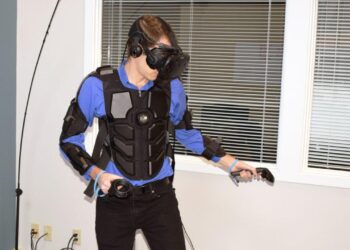For decades, the evolution of video gaming has been a story of interfaces. We moved from simple dials and joysticks to intricate controllers, and then to the intuitive grace of keyboards and mice. Motion controls and virtual reality headsets promised to place us inside the game world, but even these advanced technologies are still intermediaries—physical tools that translate our conscious intent into digital action. But what if we could remove the middleman entirely? What if the final barrier between player and game—the controller itself—could dissolve, allowing us to command digital worlds with the sheer speed of thought? This is not a distant sci-fi fantasy; it is the tangible promise of neural implants, and it represents the ultimate, and perhaps final, frontier for interactive entertainment.
The concept of directly interfacing the human brain with a computer, known as a Brain-Computer Interface (BCI), is poised to fundamentally redefine the very essence of gaming. We are standing at the precipice of an era where reaction times are no longer limited by nerve conduction and muscle twitches, but by the instantaneous firing of a neuron. It’s a future where virtual worlds can not only be seen and heard but also felt and emotionally experienced, creating a level of immersion so profound it blurs the line between reality and simulation.
This in-depth exploration will journey into the heart of this technological revolution. We will demystify the science behind neural implants, examining how they work and who the key players are in this burgeoning field. We will then dive into the staggering potential these devices hold for transforming gameplay, creating entirely new genres, and providing unprecedented accessibility. Finally, we will confront the monumental ethical, safety, and societal challenges that stand between today’s prototypes and tomorrow’s living rooms, asking the crucial questions that must be answered before we plug our minds into the game.
From Medicine to Metaverse: Understanding Brain-Computer Interfaces
Before becoming the holy grail for gamers, the story of BCIs began in the world of medicine. For years, this technology has been a beacon of hope for individuals with severe paralysis, offering a way to control prosthetic limbs, communicate, and interact with the world through thought alone. This noble origin provides the bedrock of research upon which the future of entertainment is now being built. At its core, a BCI is a system that deciphers the brain’s electrical signals and translates them into commands for an external device. These systems primarily fall into two distinct categories.
A. Non-Invasive BCIs: These are devices that read brain activity from outside the skull. The most common example is an electroencephalography (EEG) headset, which uses an array of sensors placed on the scalp to detect broad patterns of electrical activity. Think of this as trying to understand a massive football stadium’s roar from the parking lot. You can tell when the crowd is excited or disappointed, but you can’t hear any individual conversations. While safe and accessible, non-invasive BCIs are currently limited by low signal resolution and are prone to “noise,” making them unsuitable for the kind of precise, high-speed control that gaming demands.
B. Invasive BCIs: This is the technology that captures the imagination and holds the key to true thought-speed control. Invasive BCIs involve a surgical procedure to place an implant, often a tiny array of micro-electrodes, directly onto or into the brain tissue. This is like placing a microphone next to every player on the football field. The fidelity and resolution of the signal are thousands of times greater than non-invasive methods, allowing for the detection of the firing of individual neurons. Companies like Neuralink and Blackrock Neurotech are pioneering these types of implants, which can read the brain’s motor cortex signals—the intention to move—before the signal even travels to the spinal cord. It is this high-fidelity, direct-from-the-source data that promises to revolutionize gaming.
The Quantum Leap: How Neural Implants Will Reinvent Gameplay

The integration of high-fidelity BCIs into gaming won’t be an incremental upgrade; it will be a paradigm shift that redefines the very mechanics of play. The possibilities extend far beyond simply replacing a mouse click with a “thought click.”
A. The Absolute End of Latency: In competitive gaming, success is measured in milliseconds. The time it takes for your brain to command your hand to click a mouse is a physical limitation—a biological latency. An invasive BCI bypasses this entire process. The moment you intend to fire, aim, or cast a spell, the implant reads that signal directly from your motor cortex. The action is instantaneous. This would level the playing field in esports in a way never before imagined, making gameplay a pure test of strategy and decision-making, completely unhindered by physical reflexes.
B. True Immersion Through Two-Way Communication: The most profound potential of advanced BCIs lies in their ability not just to “read” from the brain, but also to “write” to it. Future implants could stimulate the brain’s sensory cortex, allowing players to feel the texture of a virtual object, the warmth of a digital campfire, or the impact of a raindrop. This goes beyond the rumble of a controller into the realm of genuine haptic sensation. Furthermore, by monitoring the brain’s emotional centers, a game could adapt in real-time to the player’s feelings. Imagine a horror game that senses your fear and dynamically alters the environment to become even more terrifying, or a role-playing game where the dialogue options and plotlines shift based on your genuine emotional response to the characters.
C. Crafting Worlds for the Mind: With the constraints of physical controllers removed, entirely new genres of games could emerge. Imagine a creative game where you sculpt and build complex structures simply by visualizing them, or a strategy game where you command vast armies not with frantic clicks, but with a calm, overarching strategic thought. Puzzle games could be designed around manipulating objects in ways that are physically impossible, controlled by a direct, intuitive mental grasp of the game’s logic.
D. Unlocking Gaming for Everyone: Perhaps the most immediate and benevolent impact of BCI technology will be in accessibility. For millions of gamers with physical disabilities that prevent them from using traditional controllers, neural implants offer a pathway to full participation. Individuals with paralysis, amputations, or severe motor impairments could compete on an equal footing, their minds unleashed in virtual worlds even if their bodies are constrained. This represents a monumental step forward for inclusivity in the gaming community.
The Dark Side: Confronting the Monumental Risks
For all its incredible promise, the road to a future of neural gaming is fraught with profound ethical and safety challenges that we are only just beginning to contemplate. The stakes are infinitely higher than a software bug causing a game to crash; here, the “hardware” is the human brain.
A. The Final Frontier of Privacy: If a BCI can read your intent to move a game character, what else can it read? Can it detect your subconscious biases, your political leanings, your hidden fears, or your unexpressed thoughts? The data harvested from a neural implant would be the most intimate and personal data imaginable. The questions of who owns this data—the user, the game developer, the implant manufacturer—and how it is protected from being sold or exploited are of paramount importance.
B. The Terrifying Threat of “Brain-Hacking”: The cybersecurity implications are staggering. If your bank account can be hacked, so can a device connected to your brain. A malicious actor could potentially intercept and manipulate the data stream. In a benign scenario, they might cheat in a game. In a terrifying one, they could induce unwanted actions, trigger sensory hallucinations in a “write”-capable BCI, or even cause physical pain. The security of these devices must be virtually infallible before they can be considered for widespread consumer adoption.
C. The Blurring of Self and Simulation: What happens to our sense of identity when the line between our thoughts and the digital world becomes non-existent? The potential for addiction to hyper-immersive experiences is immense. Furthermore, if a BCI can write sensory data to our brain, it could lead to a crisis of reality. How could we be certain that what we are seeing and feeling is real and not a signal being fed to us by the implant? These are deep philosophical questions about the nature of consciousness and identity that we must confront.
D. The Creation of a New Digital Divide: BCI technology will initially be incredibly expensive and accessible only to the wealthy. This could create a profound societal schism—a future where an elite class of “enhanced” humans has a significant cognitive and competitive advantage in both virtual and, eventually, real-world applications. Ensuring equitable access and preventing the creation of a new, biologically-enforced class structure is a critical societal challenge.
The Road Ahead: From Laboratory to Living Room

While pioneers like Neuralink have demonstrated impressive proofs-of-concept, the reality of purchasing a neural implant at your local electronics store is still a distant dream. The journey from today’s medical-grade prototypes to a safe, reliable, and affordable consumer product is likely to take decades. The immediate future will see continued development in the medical field, refining the surgical procedures, improving the longevity of the implants, and expanding their therapeutic applications.
For gaming, the first consumer-level steps will likely come from increasingly sophisticated non-invasive headsets. As this technology improves, we may see games that can reliably read basic emotional states or simple commands. However, the true “thought-speed” revolution awaits the maturation of invasive BCI technology. This will require not only clearing immense technical and manufacturing hurdles but also navigating the complex labyrinth of medical regulation and, most importantly, earning the trust of the public.
In conclusion, neural implants undeniably represent the ultimate destination for immersive gaming. The potential to merge mind and machine, to control vast digital worlds with the power of thought, is a vision of breathtaking ambition. Yet, this power comes with unprecedented responsibility. As we stand on this final frontier, our focus must be twofold: to push the boundaries of what is technologically possible, while simultaneously building the strong ethical and safety frameworks necessary to ensure this powerful technology serves to elevate, not compromise, our humanity. The game is about to change forever, but we must ensure we are ready to play.












